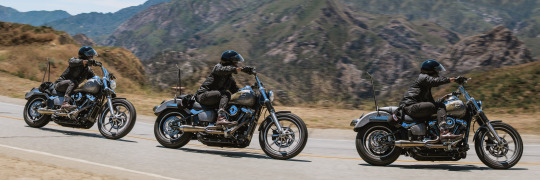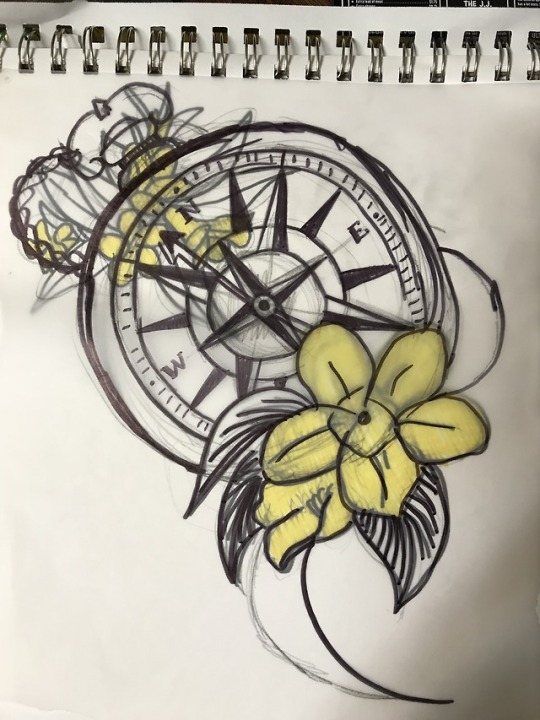Photo

Van Life
Sequoia National Park, California
© Quin
570 notes
·
View notes
Text
Motorcycle Meditations
In January 2019, UCLA published a study (in partnership with Harley-Davidson) cataloging the numerous health benefits of riding a motorcycle.

Research Highlights:
● Riding a motorcycle decreases stress by 28%
● Similar to light exercise, a 20-minute ride increases heart rates by 11% and adrenaline levels by 27%
● Compared to driving a car, focus enhances while riding a motorcycle (at levels comparable to meditating)
● Increased alertness in participants’ brain activity while riding
As motorcyclists, we’re already aware of the advantages of opting for two wheels. We throw around phrases like throttle therapy. We stand by the claim that “four wheels move the body — but two wheels move the soul”. We swear that “you never see a motorcycle parked outside of a psychiatrist’s office.”
But my question is:
Why?
Why does motorcycling decrease stress?
Why do two wheels increase your focus?
In this day and age, it’s hard to do one thing at a time. We’re often watching Netflix while scrolling through Instagram, reading an email during a meeting, or worse yet, texting while driving. But on a motorcycle, if you’re not focused on doing this one thing, it can cost you everything.
When I’m on the bike, I don’t worry about my bills or stress over workplace drama. I don’t ruminate over the past or get anxious about the future. I don’t let anything distract me from the now.
I’m focused. I’m aware. I’m present.

Psychologists refer to this state of mind as flow. Flow is when all your energy goes into one activity and everything else falls away. It’s that sensation when you become fully immersed in what you’re doing. If you’re a painter, it’s when you paint. If you’re a writer, it’s when you write. If you’re a motorcyclist, it’s when you ride. It’s those rare moments in life when your thoughts and your actions are one, and that’s the best part of motorcycling — losing yourself in it.
In the saddle, I tend to lose track of time. For that reason, I refuse to set the clock on my bike’s instrument cluster. As I see it, I don’t want an excuse to take my mind off the road. I don’t want to feel rushed because that’s when mistakes occur. Yes, I could be late to work — and I have been — but it’s better than being injured or dead. After all, worrying about time (or anything else) would take me out of the now and we could all use more now in our lives.
Today, we’re often in two places at one time. We sit at a dinner table with our significant other and scroll through our feeds—separately. Our bodies are physically present, but our minds are elsewhere. It seems that we’re always wanting something other than what is currently in front of us.

German Philosopher, Arthur Schopenhauer, believed that people go through life with an endless striving for more (I want a new car. I want a promotion. I want a better-looking spouse. etc.). Pessimistic as that sounds, he also felt that humans could find “freedom from suffering” during the moments when they’re captivated by beauty.
If you’ve ever looked out over a great landscape (Yosemite Valley, Grand Canyon, etc.), you know the feeling. If you’ve ever thoroughly enjoyed a piece of music, you know the feeling. If you’ve ever found yourself completely immersed in a movie, you know the feeling. Well, for me, I find that feeling in motorcycling.
The dangers of motorcycling indeed deter most people from taking up the sport and I understand that outlook. For instance, mountain climbing seems like a dangerous activity to me. You’re suspended thousands of feet above the ground with your life dangling from ropes and carabiners. However, for climbers, the rewards outweigh the risks.
By concentrating on finding the next foothold or transferring weight appropriately, mountain climbers immerse themselves in the experience. In those moments, the prospects of death recede because they feel most alive. Similar to mountain climbing, injury and death are imminent threats with motorcycling, but it’s that threat of danger that forces riders to focus on the task at hand.

Yes, UCLA and Harley-Davidson have the percentages and figures to link riding and mental health, but they’re concentrating more on the what and I care more about the why. With Millennials valuing mental health, it’s a creative, forward-thinking approach for a company that’s historically conservative.
However, I wish there was more emphasis on the subjective experience as well as the objective data. After all, it’s hard to measure beauty with percentages and figures. In the end, this study aims to coax potential new riders into taking the leap but they need more context than just hearing, “motorcycles make you happier.” Hopefully, my explanation helps illustrate the point that Harley and UCLA are trying to make, and as a result, more people take to two wheels.
108 notes
·
View notes
Photo

Neil Peart, Rush, 1977 by Fin Costello, my edit of original via rollingstone
155 notes
·
View notes
Quote
The maker of the modern-day rock poster knows the power of suggestion. What does the rock poster suggest? What does it want us to believe? The rock poster tells us there is a thing happening at a certain place in time. It gives this event meaning even before the thing has happened.
This is the power of the poster. Both before the event and beyond the experience it will turn out to be, the poster says, 'The event will be like this, it will feel like this, it really will have this atmosphere, this philosophy, this identity, and a certain type of person will be there.' And then the event happens and is over. Yet the poster, still living on, still having its purpose, is interpreted to say, 'The event was like this, it felt like this.'
Art of Modern Rock: The Poster Explosion
In some of my research into silkscreened poster, I found this explanation that captures why I chose this medium for my thesis.
2 notes
·
View notes
Photo




sketches and in progress illustration for a sticker design of a compass and the state flower
0 notes
Text
Working Bibliography
Cossu, Matteo. Silkscreen Basics: A Complete How-To Manual. Gingko Press, 2012.
MacDougall, Andrew. Screen Printing Today: The Basics. ST Media Group International Inc., 2008.
Anderson, Joel and Nathan. 59 Illustrated National Parks - Hardcover: 100th Anniversary of the National Park Service. Anderson Design Group, 2015.
Creative Action Network. NATIONAL GEOGRAPHIC The National Parks Illustrated 100 Year Anniversary Book. Chronicle, 2016.
Heacox, Kim. NATIONAL GEOGRAPHIC The National Parks Illustrated 100 Year Anniversary Book. National Geographic Society, 2015.
Perry, Michael. Pulled: A Catalog of Screen Printing. Princeton Architectural Press,2011.
Williamson, Caspar. Little Book of Screenprinting. Chronicle Books, 2011.
Dillon, Jamie, et al. Print Liberation: the Screen Printing Primer. North Light Books, 2008.
DKNG. “Poster Design: Textures and Halftones for Screen Printing | DKNG Studios.”Skillshare, DKNG, www.skillshare.com/classes/Poster-Design-Textures-and-Halftones-for-Screen-Printing/1232514354/classroom/discussions?via=logged-in-home-your-classes&enrolledRedirect=1.
DKNG. “Rock Poster Design: From Concept Development to Execution | DKNG Studios.” Skillshare, DKNG, https://www.skillshare.com/classes/Rock-Poster-Design-From-Concept-Development-to-Execution/1200750634/classroom/discussions?via=continue-watching&enrolledRedirect=1.
DKNG. “Mastering Illustrator: 10 Tips & Tricks to Speed Up Your Workflow | DKNG Studios.” Skillshare, DKNG, https://www.skillshare.com/classes/Mastering-Illustrator-10-Tips-Tricks-to-Speed-Up-Your-Workflow/1583544555/classroom/discussions?via=continue-watching&enrolledRedirect=1/
Heller, Steven and Louise Fili. Shadow Type: Classic Three Dimensional Lettering. Princeton Architectural Press, 2013.
Hische, Jessica. In Progress. Chronicle Books, 2015.
McDevitt, Mary Kate. Hand-Lettering Ledger: A Practical Guide to Creating Serif, Script, Illustrated, Ornate, and Other Totally Original Hand-Drawn Styles. Chronicle, 2014.
Fick, Bill, and Beth Grabowski. Printmaking: A Complete Guide to Materials & Processes. Laurence King, 2017.
Covey, Sylvie. Modern Printmaking: A Guide to Traditional and Digital Techniques. Watson-Guptill, 2016
Schmidt, Christine. Print Workshop: Hand-Printing Techniques and Truly Original Projects. Potter Craft, 2010.
Hayes, Clay. Gig Posters: Rock Show Art of the 20th Century. Quirk Book, 2009.
Easley, Erica, and Ed Chalfa. Rock Tease: The Golden Years of Rock T-Shirts. Abrams Image, 2006.
Printmaking Bible
Graphic Print Production
Drawing Letters
0 notes



































